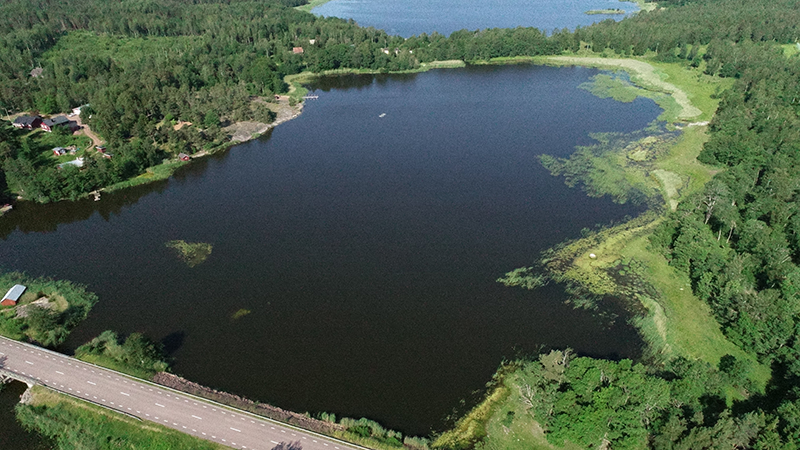
Four pieces of a puzzle: Results from the Nutrients from Sea to Field pilot
For two seasons, 2019 and 2020, we have been irrigating fields in Åland with nutrient rich brackish water from two strongly eutrophicated bays in the SEABASED project. So how did it go? Did it work? These are the two most common questions we have been asked. The answer is not that straightforward. Annica Brink, project coordinator from The Government of Åland, explains the pilot’s results like putting together a puzzle, piece by piece, before finally revealing the whole picture.
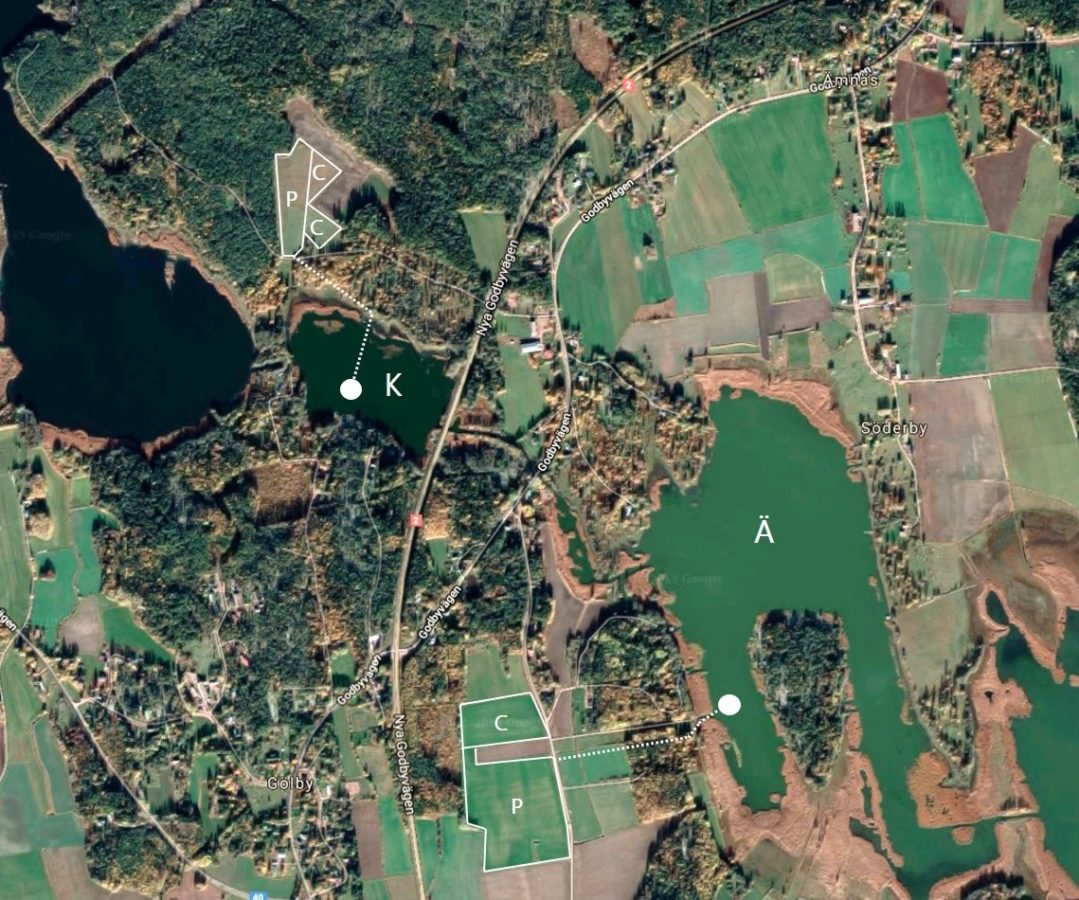
Overview of fields and bays. K = Kaldersfjärden, Ä = Ämnäsviken, P = pilot area, C = control area, white dots = water inlet, dotted line = water pipeline. Photo: Annica Brink
The crops
An essential part for the farmer is whether the crops can tolerate brackish water, in our case, with a salinity of 2,3–5,3. Previous studies have shown that, in general, ley (grass), grains, and beans grow well when irrigated with brackish water. Fruit and many vegetables are more sensitive.
Both farmers in our pilot cultivated ley for animal feed. Ley constitutes about 50% of what is grown on the fields in Åland, and during dry summers, the production can be very low. The Kaldersfjärden farmer irrigated four times 40 mm for each season, and the Ämnäsviken farmer irrigated two times 40 mm in 2019 and 2 times 30–35 mm in 2020.
The main differences between the irrigated ley and the non-irrigated lay are sodium content and production yield. The irrigated ley has about twice as high sodium content compared to the non-irrigated ley. As most livestock need extra sodium supply (e.g., by salt licks), this can be quite positive. The production increase at the irrigated site was substantial; 42–167% compared to the control site. Of course, most of this percentage is due to the water itself, but the nutrient content may have given an extra boost to the production outcome.
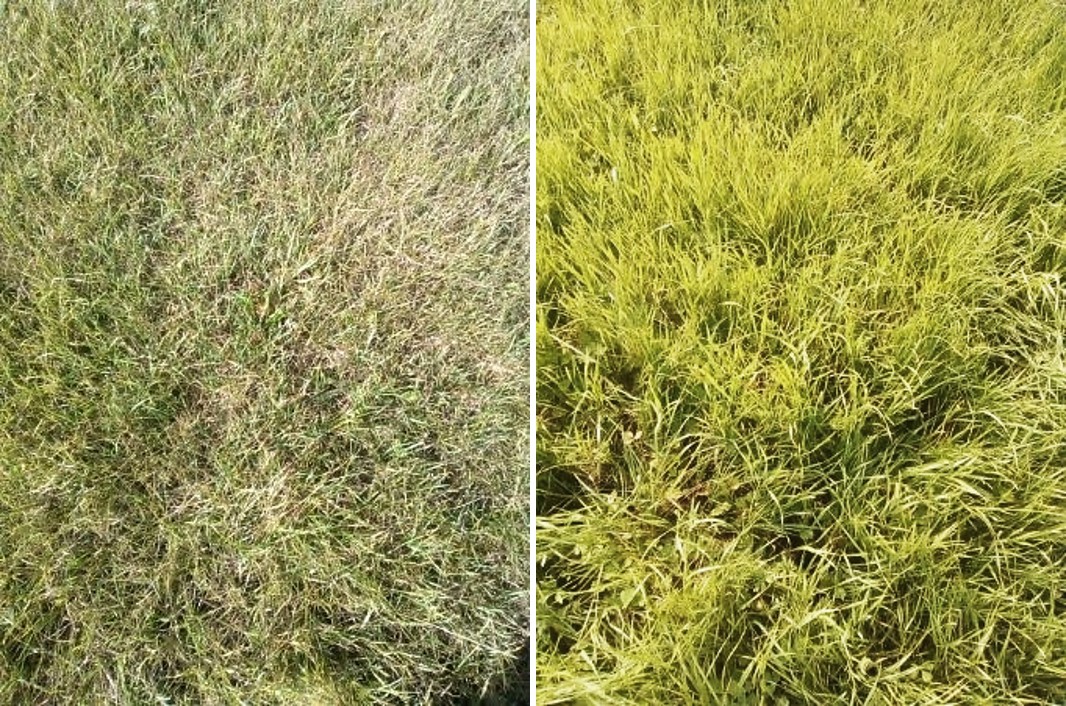
Non-irrigated ley (left) versus irrigated ley (right) at Kaldersfjärden field 2019. Photo: Annica Brink
The soil
The number one concern among farmers, politicians, and the public regarding our pilot activities has been the soil’s possible deterioration due to salt accumulation. Researchers in soil physics claim that the salt content would need to be much higher than what we have in our surrounding waters to damage the soil properties. Most of the salt in brackish water is constituted by sodium chloride (NaCl). The sodium ions can out-compete other cations, like potassium and magnesium, whereas the chloride ions are more likely to wash through the soil. Over time, with precipitation, both sodium and chloride tend to be washed out from the soil.
We have seen an increase in chloride content in the pilot site’s soil during our pilot compared to the control samples. At Ämnäsviken, the farmer also irrigated the whole field with brackish water in 2018, before joining the SEABASED pilot. Hence, the soil’s chloride content was relatively high in 2019, also at the control site. In 2020, the concentration had decreased, indicating a recovery of the soil. A conclusion is that it might be beneficial for the soil with a pause in brackish water irrigation. As for the overall soil fertility, we could not see any apparent differences between the irrigated and non-irrigated parts of the field.
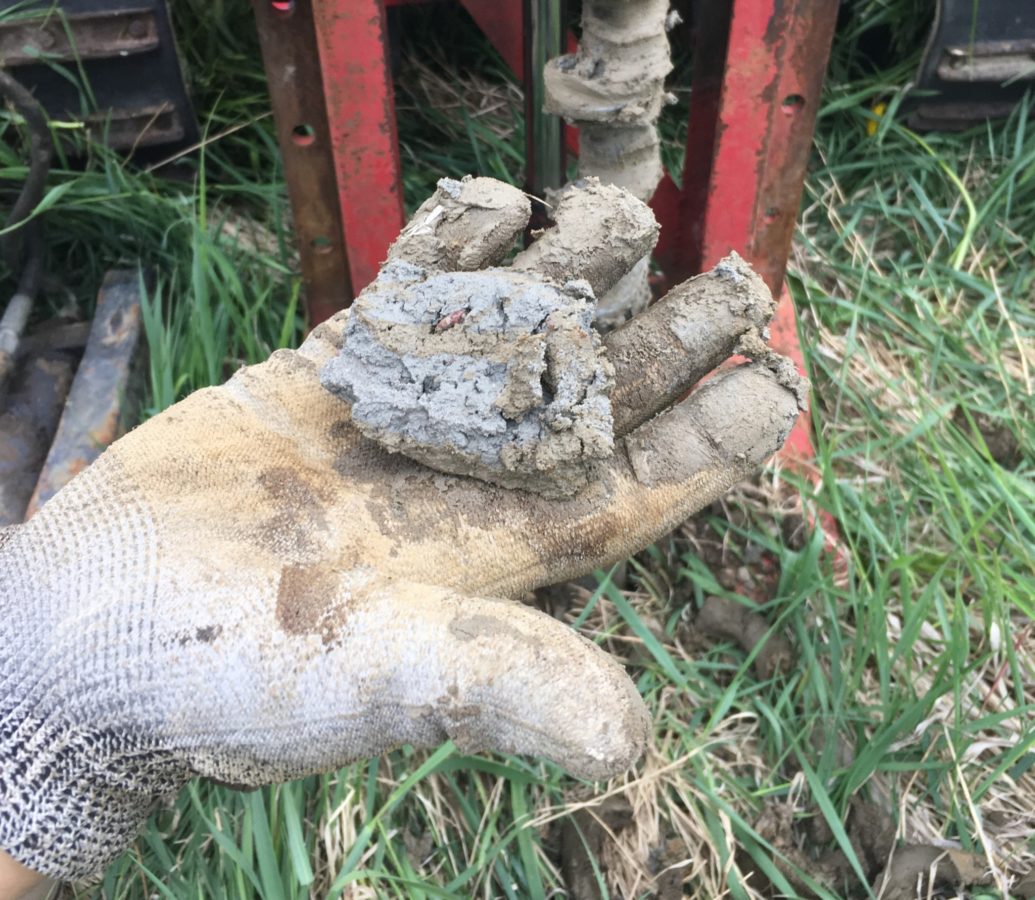
The soil in both pilot fields is constituted mainly by moraine, fine sand, and clay (photo). Soil type patchiness within a field is expected in Åland. Photo: Annica Brink
The groundwater
While most people worried about the soil, the project team had a more significant concern about what could potentially happen to the underlying groundwater. As the researchers claimed the salt would wash through the soil—where will it go? As a precaution, we drilled some groundwater tubes in the Ämnäsviken field and sampled these regularly. Our concern was justified in spring 2020 as we noticed an increase in chloride concentration (130 mg/L), just above the quality recommendation for private wells/small water treatment plants (100 mg/L). This increase happened after the first irrigation season (2019) in the SEABASED project, but bear in mind that the field was irrigated also in 2018. Hence, the increase actually happened after two seasons of irrigation. For all sampling occasions, the chloride concentration was always below the quality recommendation for larger water treatment plants (250 mg/L). The taste of salt can be noticed when levels reach above 300 mg/L.
To summarize, before irrigating with brackish water, it is good to know the run-off pattern in the area. Our recommendation is also to give the groundwater a chance to restore itself by not irrigating continuously year after year.
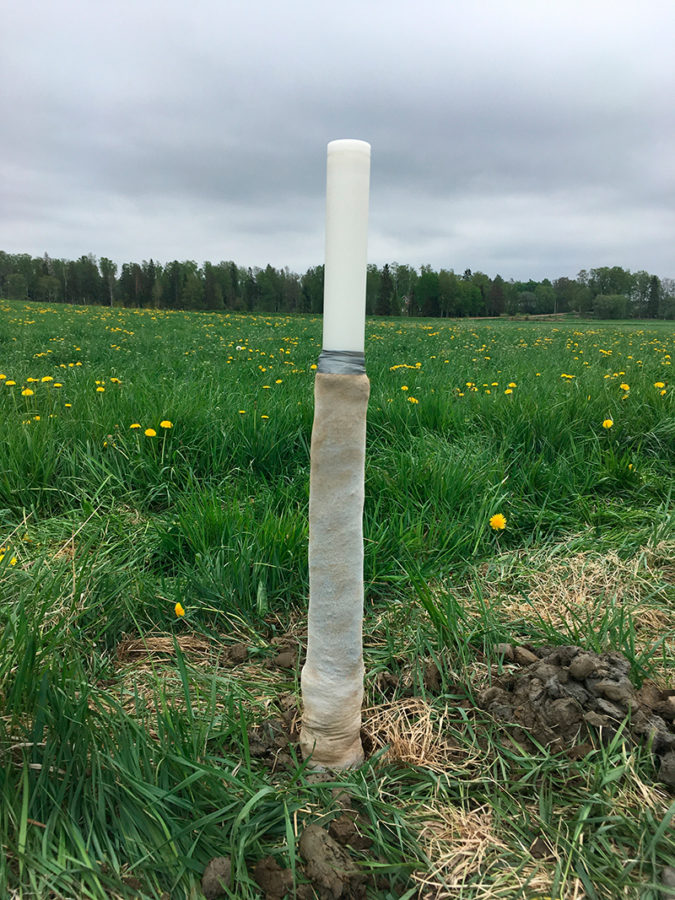
Groundwater tube in the Ämnäsviken field. Picture: Annica Brink
The bays
So, what happened in the bays? The main goal with our pilot was nevertheless to reduce the nutrient load of Kaldersfjärden and Ämnäsviken. We cannot prove a positive effect of the irrigation project statistically. The temporal scale is too short, and the bays are subject to several factors causing natural variations in the nutrient content. But we know in detail how much nitrogen (N) and phosphorus (P) we have removed.
In total, for 2019 and 2020, we removed 30,95 kg N and 2,75 kg P from the two bays. These numbers might seem low but let us relate them to how much N and P we need to remove to achieve “good ecological status” in the bays. Based on a rough model (SMHI coastal zone model), we have removed 6 % of both N and P from Kaldersfjärden each year. And for Ämnäsviken, we have removed 1 % of both N and P each year. From that perspective, it is quite a lot!

Kaldersfjärden in 2020. Photo: Annica Brink.
The whole picture
After the dry season of 2018, many animals were sent for slaughter due to lack of feed. Provided the irrigation equipment, including water pipelines, such a devastating scenario as in 2018 might be avoided in the future if we utilize the all-around-us brackish water as a first-aid measure for ley production.
If more farmers would utilize nutrient-rich bottom water for their fields, this might have a long-term positive effect on our bays’ eutrophication status. However, our recommendation is to avoid continuous irrigation year after year on the same field, but let the soil and groundwater have a chance to recover between irrigation seasons. We are surrounded by brackish Baltic Sea water. Let us take advantage of this, but with caution and always with an ecosystem-based approach in mind.


